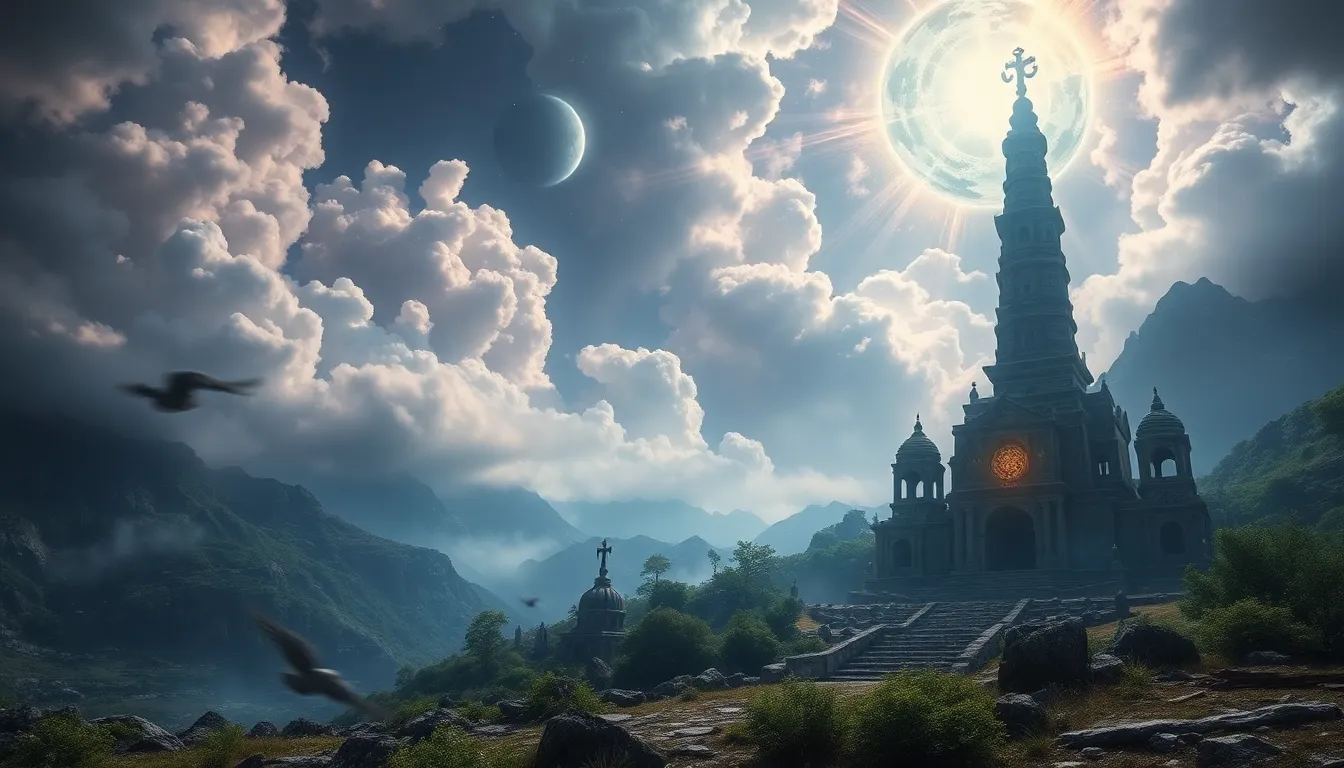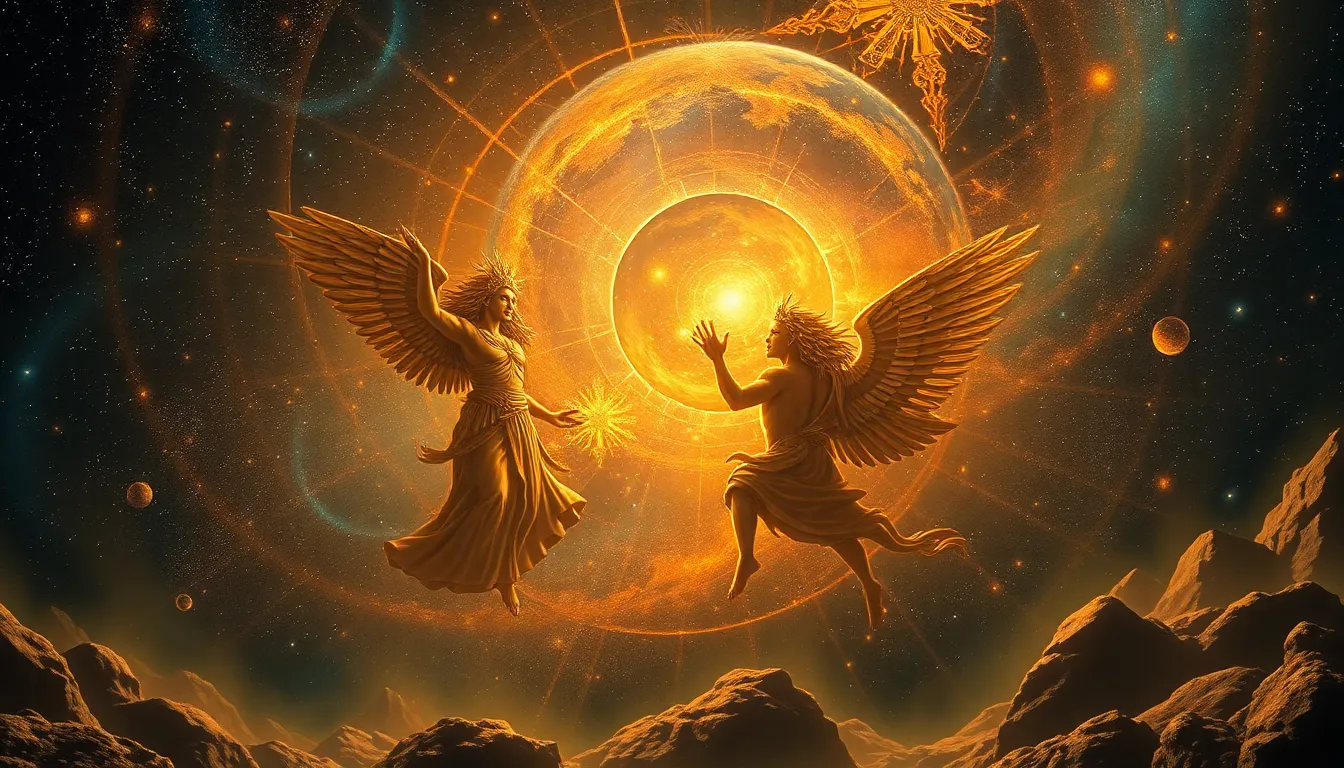Ancient Deities and Their Connection to the Universe: A Mythological Exploration
Introduction to Ancient Deities and Cosmology
Ancient deities represent the personifications of natural forces and cosmic phenomena in various mythologies across the globe. These gods and goddesses were central to the spiritual and cultural identity of ancient civilizations, serving as intermediaries between humanity and the mysteries of the universe. Cosmology, in the context of these cultures, encompasses their understanding of the universe’s structure, origin, and the divine forces that govern it.
Exploring the connection between ancient deities and the universe reveals how early civilizations interpreted their world through mythological narratives, offering insights into their beliefs, values, and the way they engaged with the cosmos.
The Creation Myths Across Civilizations
Creation myths serve as foundational stories that explain the origins of the world and humanity. Different cultures have unique narratives that highlight the role of deities in the formation of the universe. Here are some notable examples:
- Mesopotamian Mythology: In the Enuma Elish, the god Marduk creates the world from the body of the slain goddess Tiamat, establishing order from chaos.
- Egyptian Mythology: The Egyptian creation story involves the god Atum, who emerged from the primordial waters of Nun and created the world through his thoughts and words.
- Hindu Mythology: The Rigveda describes the cosmic being Purusha, whose sacrifice led to the creation of the universe and all living beings.
These narratives often share common themes, such as the struggle between chaos and order, the significance of sacrifice, and the emergence of life from primordial elements. A comparative analysis of these myths reveals how different cultures conceptualized their existence and the cosmos.
Celestial Bodies and Their Divine Associations
Ancient cultures commonly associated celestial bodies with their deities, attributing divine characteristics to the sun, moon, and stars. This connection reflected their reverence for the heavens and the belief that celestial movements influenced life on Earth. Here are a few examples:
- Sol: The Roman god of the sun, often depicted driving a chariot across the sky, symbolizing light and life.
- Luna: The Roman goddess of the moon, representing the night and its mysteries, analogous to the Greek goddess Selene.
- Ra: In Egyptian mythology, Ra is the sun god, embodying creation and the cycle of life and death.
Celestial events, such as eclipses and solstices, were often imbued with mythological significance, seen as omens or divine interventions in human affairs. These events were interpreted as manifestations of the gods’ will and had deep cultural implications.
The Elements: Gods of Earth, Water, Fire, and Air
In many ancient cultures, deities were associated with the four fundamental elements: earth, water, fire, and air. These elemental gods played crucial roles in both mythology and the natural world:
- Earth: Gaia (Greek) or Prithvi (Hindu) symbolizes the nurturing aspect of the earth, providing sustenance and life.
- Water: Poseidon (Greek) and Varuna (Hindu) represent the oceans and rivers, embodying both creation and destruction.
- Fire: Hephaestus (Greek) and Agni (Hindu) symbolize transformation and the power of destruction and renewal.
- Air: Aeolus (Greek) and Vayu (Hindu) are gods of the winds, embodying movement and the unseen forces of nature.
The relationship between these elemental deities and the universe’s structure illuminated ancient peoples’ understanding of their environment, influencing their scientific and philosophical inquiries into nature.
The Underworld and Cosmic Dualities
Many mythologies feature underworld deities, representing the dualities of existence and the cycles of life and death. These figures are often associated with the cosmos, highlighting the connection between the living and the dead:
- Hades: In Greek mythology, the god of the underworld symbolizes the inevitability of death and the afterlife.
- Osiris: In Egyptian mythology, Osiris is both a god of the underworld and resurrection, embodying the cycle of life and rebirth.
The concept of duality—light versus dark, creation versus destruction—permeates these mythologies, illustrating the balance of forces that govern the universe. Such themes resonate deeply with the human experience, reflecting the complexities of existence.
Astrology and Divine Influence
Astrology has its roots in ancient civilizations, where celestial movements were believed to influence human fate and divine will. The study of the stars and planets was not merely scientific but deeply spiritual. Notable deities associated with astrology include:
- Zeus: In Greek mythology, Zeus was associated with the sky and thunder, influencing weather patterns and fate.
- Jupiter: The Roman counterpart of Zeus, often linked with the planet Jupiter, was seen as a protector and bringer of justice.
Astrology’s historical significance lies in its ability to connect the divine with human experiences, shaping cultural practices and beliefs about destiny.
The Role of Myth in Understanding the Universe
Myths served as tools for ancient peoples to comprehend natural phenomena and the universe’s mysteries. They provided explanations for events such as storms, harvests, and celestial occurrences, fostering a sense of connection to the cosmos. Additionally, myths had educational purposes:
- They passed down knowledge of natural cycles, agricultural practices, and moral lessons.
- They illustrated the intersection of mythology, religion, and early science, laying the groundwork for future philosophical inquiries.
Through myth, ancient societies found meaning in the chaos of existence, linking their lives to the grand narrative of the universe.
Modern Interpretations of Ancient Deities
Today, the perception of ancient deities and their cosmic connections has evolved. Contemporary society often views these figures through a lens of spirituality and psychological archetypes. The resurgence of interest in mythology reflects a longing for understanding and connection:
- Modern spirituality often incorporates ancient deities as symbols of personal growth and transformation.
- Literature, art, and media play significant roles in shaping contemporary interpretations of these mythological figures.
This revival demonstrates how ancient narratives continue to resonate, offering insights into the human condition and our relationship with the universe.
Case Study: The Influence of Ancient Deities on Today’s Cosmology
In examining the influence of ancient deities on modern cosmology, we find that many concepts from mythology remain relevant. For instance, the idea of interconnectedness, prevalent in many ancient religions, mirrors contemporary scientific understandings of the universe:
- The notion of a unified cosmos aligns with the principles of quantum physics and holistic perspectives in modern science.
- Astrological practices continue to influence popular culture, with many people seeking guidance from celestial patterns.
As we explore these connections, it becomes clear that the narratives of ancient deities provide a rich tapestry of meaning that informs our current understanding of the universe.




